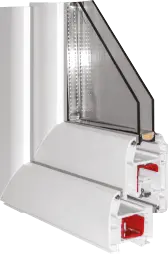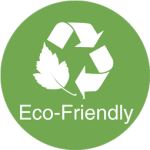
Characteristics of PVC
PVC is a synthetic material derived from the chemical industry of salt (chlorine) and petroleum, a thermoplastic, with 50% mineral origin.
Mechanically stable even in hot areas, with a formula rich in titanium dioxide.
PVC is the dominant material among all those used in joinery.
Fire-Resistant
 The melting temperature of PVC is 185°C, and it is used in various industries.
The melting temperature of PVC is 185°C, and it is used in various industries.
The self-extinguishing feature of PVC, attributed to the presence of chlorine in its composition, hinders or halts its combustion by eliminating the oxygen in the air.
PVC, classified as M1 due to its non-flammability, differs from wood, which continues to burn until turning into ashes once ignited; this phenomenon is known as self-combustion!
In many countries worldwide, PVC is highly valued for its "fire-resistant" characteristic, which does not exacerbate fires but also serves as an effective alert trigger due to the distinctive odor it emits (Odor Detection!).
Respect the environment
 Easy to maintain PVC with environmentally friendly products.
Easy to maintain PVC with environmentally friendly products.
PVC, a recyclable and reusable product in other applications, through extrusion, injection, or thermoforming.
Among the 3 most used materials, PVC has the best environmental impact.
*Ecobalance : It is the sum of all energies used to obtain a finished product, from the well to the finished product. PVC is therefore the least impactful on the environment.
